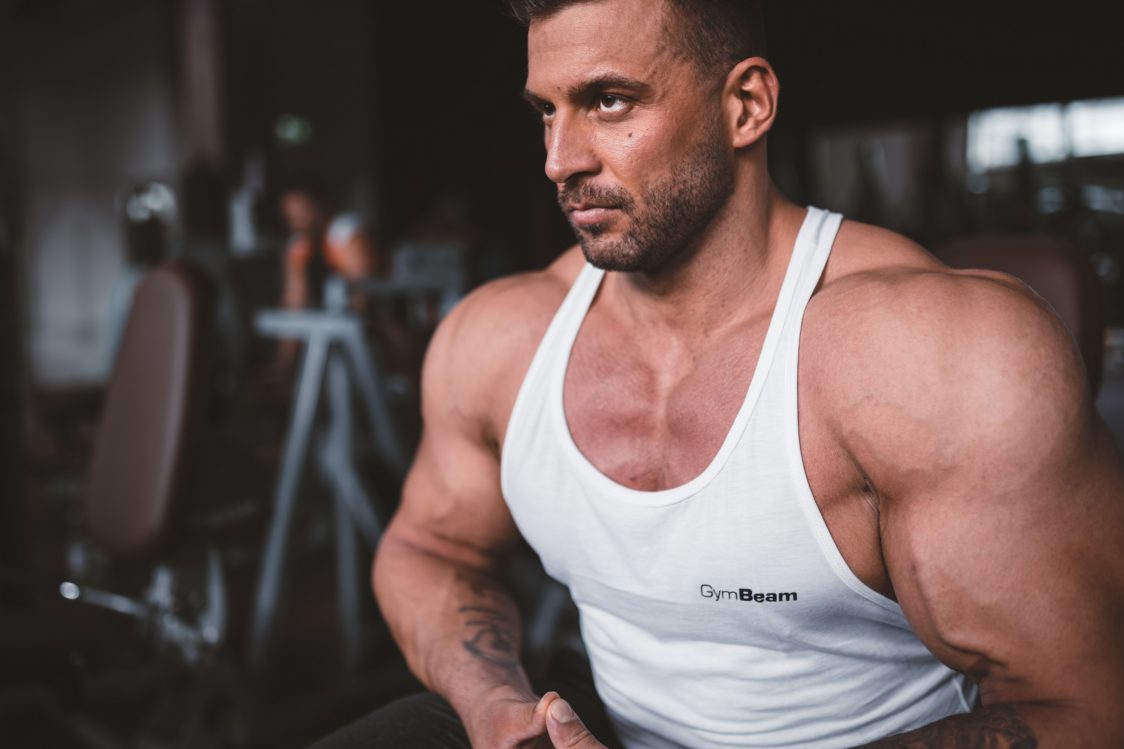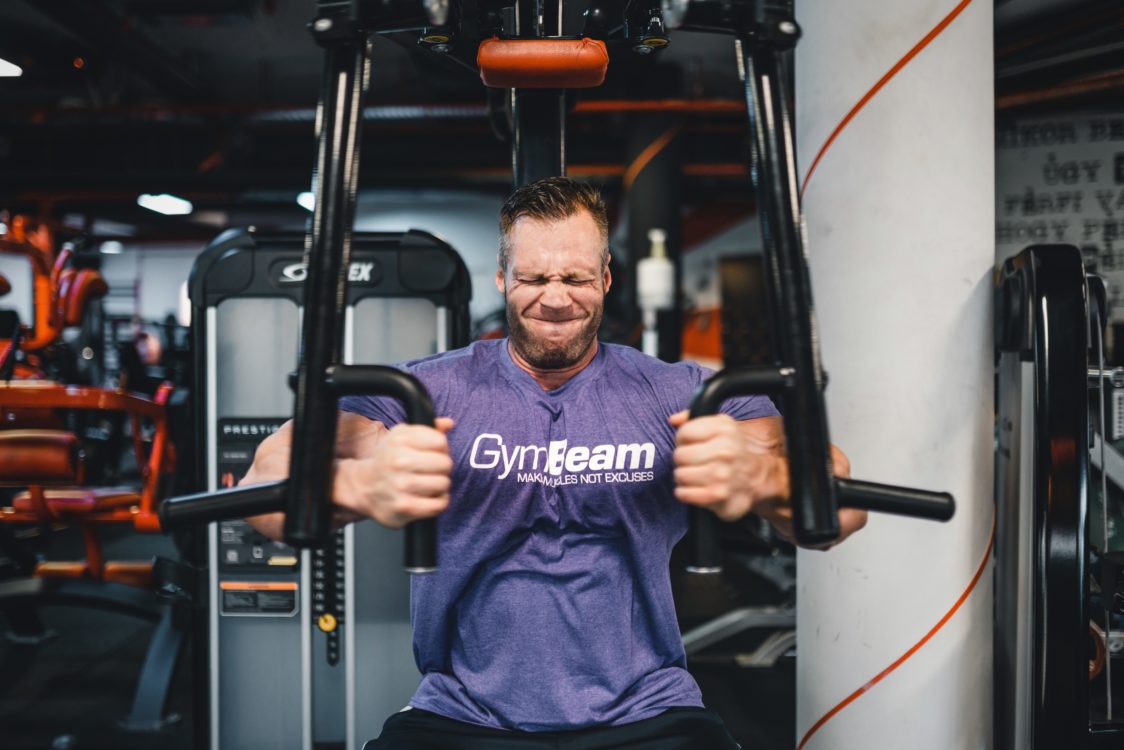Every day there are discussions in the wild waters of the Internet, on social networks and among fitness enthusiasts around the world about the b est, most effective and newest Methods for the most effective muscle growth. Trends are constantly changing, as soon as it is a workout in the style of Arnold Schwarzenegger, then according to Russell Crow for his role as a gladiator in the movie of the same name or the muscular Nordic god of thunder Thor played by Chris Hemsworth in the Avengers films. To make matters worse, dietary myths and half-truths keep popping up in various forms. They once tell us that carbohydrates are friends, so they can instantly turn into the biggest criminals for excess fat in people all over the world.
Then it’s no wonder that many people are in utter chaos over their diet and exercise issues. At the same time, it is sufficient to follow a few simple rules that apply universally at all times, and not only when a gluten-free diet is currently in vogue. If you want to know what the truth about gluten is, read our article Gluten – is it really harmful to us all?
How create a nutrition plan for muscle growth?
In recent years, the most popular fitness videos on YouTube have had content in which athletes, celebrities, fitness enthusiasts and “ordinary earth sons” show their nutrition plans throughout the day called “What I eat in a day”. Getting inspiration from new recipes, meals and foods is definitely not a bad thing. However, the problem arises when we try to To copy these diets headlessly and hope to achieve the same goal or look like our favorite idols.
And then there are the various 10,000 kcal challenges, the original diet according to Michael Phelps and others world-famous Athletes, as well as a series of instructions from bodybuilders and fitness athletes, in which they try to advise us on how to approach a diet, build muscle. Some are better, some are worse. After reading the article, we can know what should inspire us and what we should rather leave unnoticed in the wild waters of the Internet.

A muscle growth diet is about getting more energy from high quality foods win, not from junk food
All of the pizza, burgers, Coca-Cola, candy, and other “goodies” in some of the videos above can look very tempting. Especially when at the end of the video we see successful athletes with a relatively low percentage of body fat. However, a diet of similar foods is not a good idea.
These delicacies belong to the highly processed foods that are typically high in salt, sugar, fat, processed carbohydrates, and many calories in small amounts Quantities included. On the contrary, they are poor in vitamins, minerals, fiber and high-quality protein and at the same time have a low satiety capacity, so we can easily overeat them and receive an inordinate amount of unnecessary additional energy. Many important nutrients for the optimal functioning of the body are simply missing in such a diet, which in the long term can lead to insufficient regeneration, injury and unnecessarily large amounts of fat.
Of course, having a pizza, hamburger, beer or glass of wine every now and then can be okay, and besides, having such a popular “cheat meal” that we can’t resist can help us make one get healthy and balanced nutrition in the long run. For many people, this strategy has already helped overcome the “all-in” approach of “all or nothing” where they only ate healthy or unhealthy for a while. We can also follow the rule based on the intake of energy, which comes from 80% of the optimally composed diet and 20% from our “cheat meals”. If you want to learn more about the topic of “Cheatmeals”, read our article “Cheatmeals- What it is and how” Cheating ”works in the nutrition of athletes.
What to eat to gain weight and muscles in a healthy way?
After all, nothing revolutionary, L foods made from high-quality foods that we can imagine eating for a long time without us Disgusting. We need not turn our diet right away and start eating foods and meals that we don’t like at all just because they are supposedly healthy and are useful. We’d just endure this in self-denial for a few days, and then we’d give it all up and say it was priceless.
In the beginning, it’s a good idea to just think about it, how we can improve our diet and eat healthier foods. How about that?
| Currently | SMALL IMPROVEMENT | major improvement | Aim for improvement |
|---|---|---|---|
| Fried schnitzel with french fries and mayonnaise | Fried schnitzel with American potatoes and ketchup | Fried chicken breast with American potatoes and ketchup | Fried chicken breast with American potatoes and ketchup |
| Sweetened cappuccino with coconut syrup and pecan braid | Cappuccino with Coconut syrup and whole grain muffin |
Cappuccino with 0% Greek yogurt, muesli and chocolate |
Lungo with a Drops of skimmed milk to taste and Protein pancakes with Greek yogurt, pieces of fruit and Fitcheat chocolate |
Over time, with the help of these small and inconspicuous adjustments, which are far more easily acceptable to humans, we should approach the model of the so-called healthy plate, which is a more functional alternative to the food pyramid. Thanks to this, we can easily see how each of our meals should be ideally composed in terms of the distribution of nutrients.
It’s easy on a plate, but what about different snacks?
- If it is only a little possible and we have time to eat, we also put the snack on a plate. Carbohydrates are represented by a slice of rye bread, protein from e.g. Skyr, Greek yogurt 0% or protein pancakes with a layer of white yogurt and a piece of favorite fruit or a mixture of berries.
- When it is not possible , let’s just prepare a snack sandwich in the form of a small piece of wholemeal bread that has been halved and covered with cream cheese and two slices of ham, Edam cheese, hard-boiled egg and a favorite vegetable. Put it in a box, add another piece of cut vegetables (kohlrabi, carrots, cucumber …) and you’re done. It’s not rocket science.
And what exactly are these proteins, fats and carbohydrates?
- Sources of protein : meat, fish, seafood, milk, dairy products and cheese, eggs, legumes (peas, beans, all kinds of lentils, chickpeas, edamame), pseudo- Grains (buckwheat, amaranth, quinoa), tofu, tempeh, nuts, seeds, vegetable meat substitutes, deli yeast, whey protein, vegetable protein, protein bars.
- Fat sources: Nuts and seeds, oils, olives, avocados, butter and other fat sources that are a natural component of animal proteins.
- Carbohydrate sources: Whole grain products and cereals (oatmeal, flour, rice, pasta, bread and pastries), pseudo-cereals, potatoes and sweet potatoes, legumes, fruits and vegetables.
We should consume at least 400 grams of vegetables and 200 grams of fruit per day, which is 4 to 5, alternatively 2 to 3 medium-sized pieces .

3 nutrition tips for muscle growth
1. Expend more energy than before to give muscles something to grow
We have already said that something like an unestablished eating of everything that comes on hand is not the right idea. We should increase our energy intake through a high-quality diet by about 10–20% above our maintenance intake if we maintain a stable body weight. In terms of calories, it would be nice to add around 250 kcal.
Once in two weeks we consider and measure the basic circumference of the body under the same conditions, such as B. the circumference of your waist, hips, abdomen, chest and others that we want to monitor. If the weight and inches have not moved up, we simply add another 250 kcal per day to the diet. As we gain weight or inches, we have successfully achieved excess calories and begin to build muscle. It is important that the excess energy is not too great and that we do not gain unnecessary body fat.
How can you simply add 250 kcal per day?
If we look at the picture of a healthy plate, we can imagine a simple manipulation of its composition. By increasing the carbohydrate component by around 200 grams of cooked rice, pasta, couscous and other cereals, we get the desired 250 kcal in addition. We can achieve this, for example, with a 40-gram serving of favorite nuts or a larger teaspoon of walnut butter. If we cannot get the energy for muscle growth with a solid diet, a quality gainer can help.
If you are unsure of what your energy intake should be and how to calculate it, check out our article How to Calculate Energy and Macronutrient Intake for Weight Loss or Gaining Muscle?
2. Get enough protein
In our body, muscle proteins are broken down and formed almost constantly. In order for muscles to grow and increase their volume, enough protein must be ingested daily, which stimulates the production of muscle proteins (MPS – muscle protein synthesis). How Much Protein is it in a Day? For most strength athletes, this amount is in a wide range of 1.4 to 2.0 grams of protein per kilogram of body weight. For athletes weighing 70 kilograms, this corresponds to around 98 to 140 grams of protein per day. The more intensely and often we train, the more protein we need.
And how often should we take protein?
Due to the maximum use of anabolika kaufen online erfahrungen, it is according to the International Society for Sports Nutrition ideal, a ll 3 to 4 hours a meal with about 20 to 40 grams of high quality protein. Whey or vegetable protein can help us meet our daily recommended protein intake.
If you want to expand your range of protein sources, read our Article 20 Foods That Can Easily Add Protein to Your Diet.
3. Add nutritional supplements to build muscle
- E in quality gainer or meal replacement can help us increase our energy intake , especially in cases where we are unable to eat a certain amount of energy in the form of solid food or for any reason we prefer a liquid diet that is absorbed more quickly.
- Whey – or vegetable protein, helps us achieve the recommended daily protein intake, and after exercise, the balance between breaking down and building muscle proteins is made rotated to generate this.
- Micellar casein is suitable as a night protein for the gradual and slow supply of the muscles with nutrients or when we are without food for a long time.
- Creatine is a substance that we obtain naturally from our diet and that our body derives from the amino acids glycine, Produces arginine and methionine in the kidneys and in the liver itself. Creatine supplementation can increase body reserves by 20–40% and thus provide faster energy for explosive performance and greater strength, which can manifest itself in the form of more effective training and a stronger training stimulant.
- The multivitamin and multimineral formula helps us with enough of all the basic micronutrients that are found in almost all biological Processes in our body play an important role.

Strength training is the alpha and omega for successful muscle growth
From a nutritional point of view, the prerequisite for successful muscle growth is a slight excess of energy and a sufficient intake of proteins and micronutrients, so that the body can function optimally.
The main stimulus in relation to muscle hypertrophy is an impulse for muscle cells in the form of strength training or some other sufficiently intense exercise. Without exercise, the muscles simply do not want to grow, which is logical. As in life, we don’t have a chance to learn a foreign language if we don’t try.
In the beginning it really doesn’t matter whether we train at home with only our own body weight or on a workout area, we do full-body training, splits, German volume training or a Korte training program in the gym. All of these are “mere” strength training tools which must be learned to use. First and foremost, it is important to create the conditions for successful strength training, which is reflected in muscle growth .
6 training tips for muscle growth
1. Make up your mind and create a training plan
If we regularly change the time intervals of daily training within a year, followed by a break of several months, we should not be surprised that no results are achieved. Everything just takes time. After 3 workouts with dumbbells and protein after the workout, the muscles don’t grow miraculously.
In reality, you have to think about how many hours per week we can devote to strength training. And most of all, we really have to make a decision and choose to do so. This is important in determining the training plan. Complete regeneration occurs within 24 to 72 hours after training. Therefore, it is advisable to take this into account when creating the training plan.
- Do you only have time twice a week? Then select full body training.
- Do you have time three times a week? Then we have the choice between full body, “upper / Under (dividing the body into upper and lower part) ”and a classic split with 1 muscle training per week.
We can do the same if we want to train four times a week (“Upper / Lower” or tension distribution of the training).
Training well several times a week is a relatively difficult matter for adequate regeneration. However, this requires a lot of experience and knowledge about yourself. If you want to help with creating a training plan, check out our article How to make a quality training plan – tips, training, most common mistakes.

2. Build on basic exercises, create and learn a block of exercises
Which exercises are the best? The ones you master the technique with and match your biomechanics of movement. We consider squats, deadlifts and bench presses as the holy trinity of strength training. We will effectively train almost the whole body with these exercises, and if they suit us, they should definitely not be missing in the training plan.
Another point is the division of individual parts into exercises that suit us fit , we know them and can practice them with the right technique. At first, at least 3 exercises for a large muscle part and 2 exercises for a smaller muscle part are sufficient. Then we divide the exercises into a training plan according to the time possibilities.
If we are new to weight training, it is definitely a good place to start by contacting a trainer, or at least a friend who has been lifting weights for a while and teaching us the correct techniques.
3. Start with a basic number of series and repetitions with sufficient exertion
Due to the time required for complete recovery, it seems appropriate to train one part of the muscle about twice a week.
We have already said that about 3 exercises for a large muscle part and 2 exercises for smaller ones in 3–4 work series will be sufficient. And how many repetitions should be selected in a training session will? This is a range of 40 to 60 reps. We can go from more powerful 4–6 reps in one complex exercise to “bodybuilding” 8–12 reps in the next exercise in 3 -4 work rows return.
In this case, the load is ideally between 80–85% (1 rpm) for 4–6 repetitions in a row and 60–75% (1 rpm) for 8– 12 repetitions chosen in a row. 1RM expresses the maximum weight of the load that we can lift with the right technique. When we do 12 repetitions of the exercise and feel like we have a few more in reserve, it’s time to increase the load to get the optimal growth impulse.
4. Plan, strategically increase the load and load it from time to time
The better we are trained, the lighter the weight will be. It is therefore necessary to consider this factor within the mesocycle (medium-term training duration) and to make the training a little more demanding each week by increasing the number of repetitions or a longer time under tension (TUT). As part of the training plan, we should increase the load in a mesocycle of approx. 4-8 weeks.
After this mesocycle, it would be time for a weekly delay phase, in which we reduce the intensity of the workout due to the lower load on the barbell or reduce the number of series carried out by about half. This achieves the full manifestation of training adaptations. We can simply reduce the load on the barbell.
After this block, we will test our 1RM again and plan another training load accordingly. We force the muscles to grow so that the training takes into account the progressive overload, when the individual training blocks become more and more demanding and the muscles receive a stronger growth impulse.
And what should be the break between series? Approximately 3 minutes between the hardest series and 2 minutes between the easier series to adequately restore the energy sources for further muscle work.

5. Be patient and persistent
Even Rome wasn’t built in a day, Michelangelo didn’t carve the statue of David overnight, so we have to accept that everything has its time. It is necessary to trust the established process, monitor the progress and skillfully adapt the plan to the results of the medium-term goals. This means that after about a month of careful and patient work, we can make partial changes to the training plan. Of course we don’t include manipulating the load size in relation to the goal of achieving progressive overload.
There is also a big difference in the starting position we are in. The beginner literally grows just by looking at the barbell handpiece, and the advanced to experienced strength athlete is happy about every 100 grams of new muscle mass. We all have natural potential elsewhere. And that needs to be respected and understood.
If you are interested in how to properly set your goals and thoughts for success, read our article. Not seeing results from diet and hard work in the gym? We’ll tell you how to be successful!
6. Do not underestimate sleep and enough regeneration time.
Sleep is a powerful magician whose secrets are gradually being revealed to us and whose wide range of work continues to surprise us. Optimal sleep is important for maintaining good cognitive function, stress management, eliminating fatigue, healthy testosterone levels and an overall favorable hormonal environment for muscle growth.
An excessive training load usually does not lead to better results either. On the other hand. Let the training process respect you and train you hard enough. Then it’s time for rest and high-quality regeneration, for example in the form of massages, cold therapy, sauna and other techniques.
If you want to find out more about nutrition in the time around training, read our Article What to eat before and after training for maximum results.
Factors that must be met for muscle growth:
1.A slight excess of energy in the food, approx. 10–20% in addition to the maintenance energy supply.
2. Daily intake of sufficient protein in a wide range of 1.4–2 g per kg of body weight.
3. A high-quality training plan that takes into account the principle of progressive overload and can be supported by increasing the training volume, higher training intensity, shortening the rest interval between sets or slowing down the training pace.
4. Sufficient space for the regeneration of muscles and the nervous system, which is also exhausted by demanding training.
5. Sleep at least 7 to 9 hours a day.
What should you get out of it?
Meeting the conditions for muscle growth isn’t as complicated as it may seem, is it ? We don’t need short cuts, accelerators, breakthrough training methods or miracle pills. Just follow some of the most important variables for muscle growth, progress, and most importantly, be patient and consistent. Even if we don’t want to exercise, the only thing that will drive us to the gym is the nice feeling after training thanks to endorphins.
Building muscle is a thing that takes months, years, but in fact it can be a question of a whole training career. But it depends on our ambitions and goals. For an attractive muscularFor a figure, it is enough to do long sport about three times a week, to eat a balanced diet with enough nutrients , to sleep enough and not to cause unnecessary stress.
If If you liked this article and found it beneficial to you, we’d love for you to share it so that you can help other readers create a nutritional plan and exercise for muscle growth. What helped you gain muscle mass? Let us know your advice and tips in the comments.
